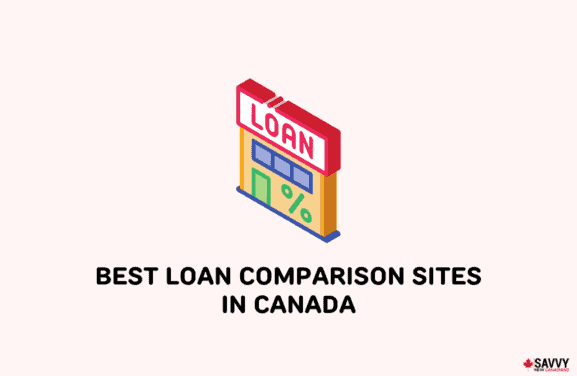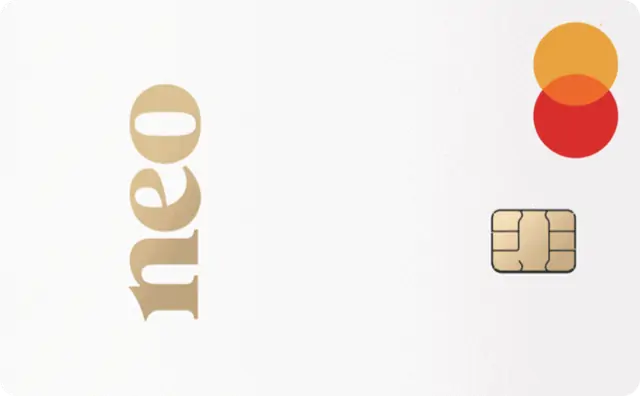Many options are available in Canada when you need access to credit, and three of the most common are personal loans, credit cards, and lines of credit.
But which is the right one for you?
These three options have similarities and differences, and choosing the right one isn’t always easy.
This guide closely examines all three, including what they are, how they work, and the pros and cons, to help you make the right choice in your situation.
What is a Personal Loan?
A personal loan is one of the most common types of loan available in Canada. It’s also one of the most straightforward options to get access to credit.
Personal loans involve borrowing a specific amount of money as a lump sum payment. It could be a few hundred dollars or several thousand.
You then agree to pay it back monthly over a set period with interest added.
Over the loan term, you will repay the total amount you borrow plus the interest.
How Do Personal Loans Work?
First, you choose where you want to apply for a personal loan, which is usually a bank.
When approved, you receive the loan as a lump sum payment. This is the amount you have agreed on, and it is deposited directly into your bank account.
It will normally have a fixed interest rate (e.g. 10%), which will be stated when you apply for the loan.
The interest rate may vary depending on the lender, your credit score, the type of personal loan you apply for, and whether it is a secured or unsecured loan.
You then make regular payments over a set period until you have paid back the loan amount and interest.
How to Apply for a Personal Loan
Applying for a personal loan is normally straightforward. You may want to start with your bank, but you could apply at another bank, like a digital bank.
You can normally apply online. The bank will ask for your personal details, income, and more information. You may be able to get an idea of how much you can borrow and how much it will cost before you apply.
When you apply, the bank will carry out a hard credit check to find out your credit score.
If your application is approved, you may find out instantly, and you will receive the money in your bank account within a few days.
Pros and Cons of Personal Loans
Pros:
- Easy to apply for a loan online.
- Can be used for almost any purpose.
- Options available for people with poor credit scores.
- Lots of choices from a wide range of banks.
- Convenient and straightforward way to access credit.
Cons:
- Can be expensive if you have poor credit.
- Failing to pay back the loan can negatively impact your credit score.
- Can lead to fees and penalties if you miss payments.
What is a Credit Card?
A credit card provides a convenient way to access credit up to a specified limit.
Your bank provides you with a credit card with a maximum limit, and you can then spend up to the limit.
Each month, you can either pay back all the money you have spent or make a minimum payment and then pay interest on the remaining money you have borrowed.
How Do Credit Cards Work?
You will have a credit card with a credit limit, and you can spend up to that limit on purchases in stores and online or withdrawing cash from an ATM.
Your credit card will have an interest rate (the APR), and this is usually somewhere around 20% to 25%. Low-interest credit cards have lower rates of about 12%.
At the end of the month, your credit card issuer will send you a statement showing what you have spent on your card and giving you a due date to make your payment.
If you pay back your entire balance by this due date, you will not have to pay interest on it, thanks to the 21-day grace period.
You must make the minimum payment amount. But if you don’t pay back the total balance, your credit card will start charging you interest.
You must continue to pay the minimum payment each month, or you could face fees and penalties.
Some credit cards also provide perks and rewards for using them. For example, you can earn cash back for spending on your card or earn reward points that you can use to get discounts.
How to Apply for a Credit Card
Choose a credit card that you like the look of. It could be a cash back credit card, a travel credit card, or something else.
You can usually apply directly via the website, and you may get an instant decision.
You will normally have to provide basic personal information, a government-issued photo ID, and the card issuer will check your credit score.
Once you have been approved, you will receive your card at your address, and you can then activate and start using it.
Pros and Cons of Credit Cards
Pros:
- Convenient way to access credit when you need it.
- You only pay interest if you don’t pay back your balance in full.
- Many cards provide rewards, perks, and benefits that you can take advantage of.
- There are many cards to choose from, including options for people with bad credit, like secured credit cards.
Cons:
- Can be expensive if you carry a balance due to high interest rates.
- Credit cards are convenient, but this can make it easy to borrow more than you can afford.
What is a Line of Credit?
A personal line of credit is a way to access revolving credit instead of borrowing a lump sum amount.
You can usually use the money for any purpose and then pay interest only on the amount you borrow.
How Do Lines of Credit Work?
Let’s say you apply for a line of credit from your bank, and you are given a limit of $20,000 with an interest rate of 8.99%.
You then decide you want to borrow $1,000 of this, so you access the money and spend it. You now owe $1,000, and interest will be charged from the first day.
You must pay back the amount you have borrowed plus the interest over a period of time.
At the end of the month, you will receive a statement showing how much you owe. There will also be a minimum payment, which is usually equal to the interest.
How to Apply for a Line of Credit
You may want to start by considering the line of credit offered by your bank. They may have special offers for customers or waive the fees involved in setting it up. But consider other lenders as well because you might find a better deal.
Then you simply apply according to the guidelines provided by the lender. You can usually apply online, but you may have to apply in person.
You will need to provide standard information, including a photo ID and details of your income, and the lender will check your credit score too.
Once approved, you can access the credit shortly after and start using it.
Pros and Cons of a Line of Credit
Pros:
- The interest rate is often lower than credit cards.
- Convenient way to access credit when you need it.
- Only pay interest on the amount you borrow.
Cons:
- There may be fees involved, like administration fees.
- A variable interest rate could make it more expensive to pay back the amount you borrow.
Credit Card vs Personal Loan vs Line of Credit Interest Rates
When it comes to a credit card, personal loan, or line of credit, which is better? There are no straight answers because it always depends on your situation.
Credit cards tend to have the highest interest rates of about 20% to 25% on average. But low-interest credit cards have far low rates of about 12%.
When it comes to a line of credit vs personal loan interest rates, they are quite similar. Lines of credit interest rates range from as low as 8% or 9% to as high as 20% or more. They are often variable rather than fixed rates.
Personal loans have interest rates of about 8% to 10% on average, but they can be far higher, up to 20% or more. The rate depends on the lender, your credit score, and more.
Should You Get a Personal Loan, Line of Credit, or Credit Card?
Use the information in this guide to help you decide which is the right option for you.
Consider your needs, check your credit score, and decide how much you want to borrow. You should also decide whether you want a lump sum for a specific purpose or access to credit when you need it.
You may end up using different types of credit. For example, you might want to use a credit card for your regular purchases and take out a personal loan for a specific purpose, like a vacation.
FAQs
It depends, but with a line of credit, you only pay for the amount you borrow. If you only want to borrow a small amount at a time, a line of credit may work out cheaper.
No, a personal loan is where you receive a lump sum. A line of credit is where you can access credit up to a specific limit, but you only pay interest on what you borrow.
Failing to pay back the money you borrow can impact your credit score, and there may be fees involved in setting it up.
Yes, a line of credit is more flexible because you only borrow the money you need when you need it instead of receiving a lump sum payment.
Related: Best Buy Financing in Canada






